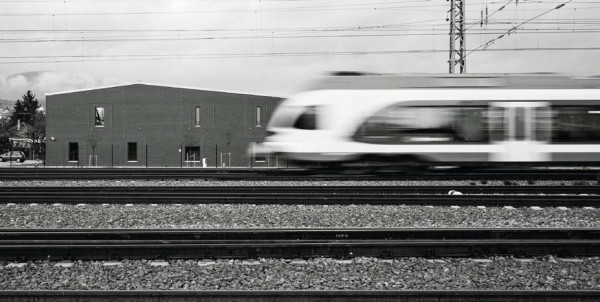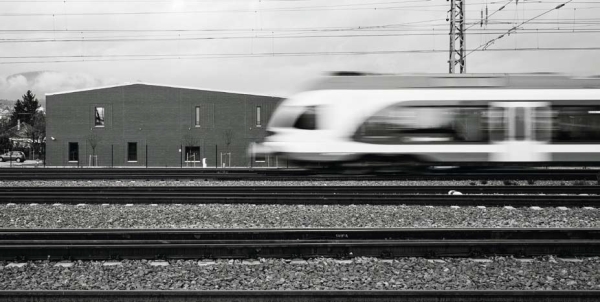Ready for Travel
Hungarian Railways Auxiliary Buildings, Vác
Architect: László Pethő
Text: Bálint Botzheim
Photos: Tamás Török / Topogram

The first steam engine went on her maiden voyage in 1846 from Pest to Vác. This route being the first line of public transport in Hungary has preserved its prestige ever since and carries approximately 10 % of all passenger traffic of the railways in the whole country. The railway station in Vác has been significantly renewed recently, and has been enriched with two new buildings for its maintenance and operation. The two structures embrace a courtile dampening the noise so as not to disturb people living in the neighborhood. The entrance to the yard is marked by two strict slits at the longitudinal end of each wing. The smaller entrance on the western side is reserved for passenger traffic whilst the larger on the eastern end is meant for cargo. Set in the railway context, the exterior forms of the building appear unusual and novelty at first sight. It actually exerts its influence via its mass and volume and it imitates the passing of a train with the sweeping contours of its roof structure. The sculpturesque brick surfaces surrounding the windows evoke the typical sliding windows on trains with their special designs. The building on the southern side houses all the areas necessary for the safety equipment whilst the one on the northern side contains the work stations of engineers in charge of maintenance. Interior architecture and design lent a genuinely railway character to the utility rooms. The green of the artificial resin floor continues on the doors which is counteracted by the simple unadorned grey plaster surfaces of the walls and are complemented by built-in furniture painted grey.
Architecture: GEON Építészstúdió Kft.
Leading architect: László Pethő
Fellow architects: Zsófia Molnár, Zsuzsa Nagy
Execution plans: B. Erzsébet Terbe – Mérték Építészeti Stúdió Kft.






